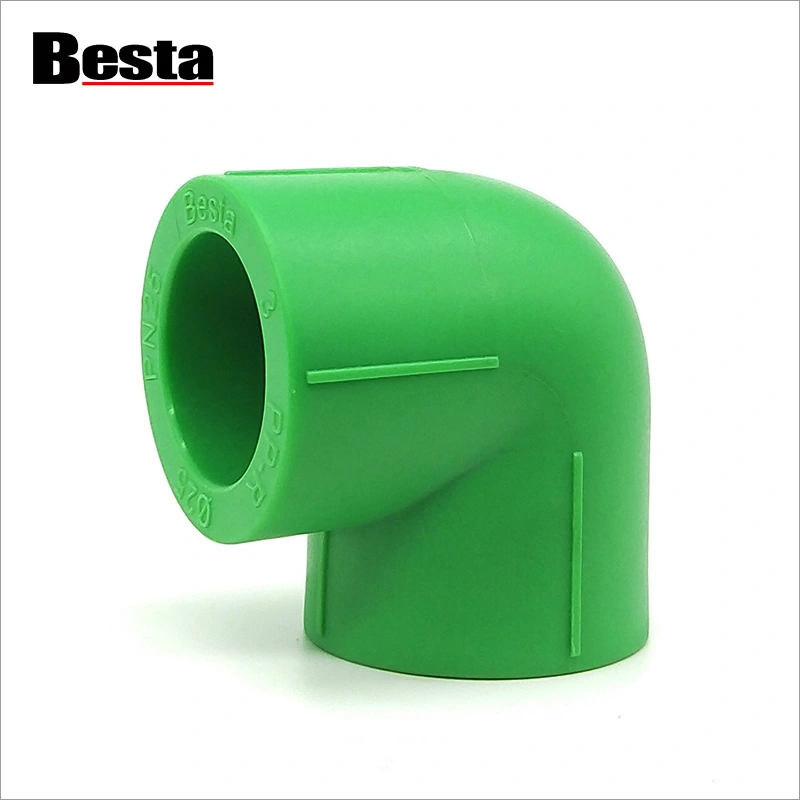- English
- Español
- Português
- русский
- Français
- 日本語
- Deutsch
- tiếng Việt
- Italiano
- Nederlands
- ภาษาไทย
- Polski
- 한국어
- Svenska
- magyar
- Malay
- বাংলা ভাষার
- Dansk
- Suomi
- हिन्दी
- Pilipino
- Türkçe
- Gaeilge
- العربية
- Indonesia
- Norsk
- تمل
- český
- ελληνικά
- український
- Javanese
- فارسی
- தமிழ்
- తెలుగు
- नेपाली
- Burmese
- български
- ລາວ
- Latine
- Қазақша
- Euskal
- Azərbaycan
- Slovenský jazyk
- Македонски
- Lietuvos
- Eesti Keel
- Română
- Slovenski
- मराठी
- Srpski језик
What Should You Consider When Choosing PPR Plastic Fittings for Your Home?

What are the benefits of using PPR Plastic Fittings in plumbing systems?
PPR Plastic Fittings have many advantages over traditional metal fittings. They are lightweight, so they are easy to handle and install. They are also less expensive than metal fittings. PPR plastic fittings are resistant to corrosion and chemical damage, which makes them a durable option for plumbing systems. They are also environmentally friendly because they can be recycled.
What types of PPR Plastic Fittings are available for plumbing systems?
There are several types of PPR Plastic Fittings available for plumbing systems. Some of the most common types include couplings, elbows, tees, reducers, and end caps. Couplings are used to connect two PPR pipes together. Elbows are used to change the direction of the plumbing system. Tees are used to connect three pipes into one main line. Reducers are used to connect pipes of different sizes. End caps are used to close off the end of a pipe.
How do you choose the right PPR Plastic Fittings for your plumbing system?
When choosing PPR Plastic Fittings for your plumbing system, it is important to consider the size and type of pipe you are using, as well as the purpose of the fitting. It is also important to choose PPR Plastic Fittings that are compatible with the other components of your plumbing system. You should also consider the pressure rating of the fittings, as this can affect the overall performance of your plumbing system. It is best to consult with a plumbing professional to ensure you are choosing the right PPR Plastic Fittings for your specific needs.
What is the installation process for PPR Plastic Fittings?
Installing PPR Plastic Fittings is a simple process that requires only basic plumbing skills. The first step is to prepare the pipe by cutting it to the desired length and deburring the edges to ensure a smooth connection. Then, apply a thin layer of PPR glue to the pipe and fitting and press them together firmly. Allow the glue to dry for the recommended amount of time before turning on the water supply. It is important to follow the manufacturer's instructions carefully to ensure a proper installation.
The use of PPR Plastic Fitting in plumbing systems has many benefits for homeowners and business owners alike. Its durability, resistance to corrosion and chemical damage and affordability make it a popular choice. By considering the type and size of pipe, the compatibility of fittings with the other plumbing components, and the pressure rating of the fittings, you can choose the right PPR Plastic Fittings for your specific needs. Ningbo Ouding Building Material Technology Co., Ltd. is a leading supplier of PPR Plastic Fittings and other plumbing materials. With years of experience in the industry, they provide high-quality products at competitive prices. For more information about their products and services, please visit their website at https://www.albestahks.com or contact them at devy@albestahk.com.Scientific Papers
1. William J. Wilson, 1998, "The effects of temperature on PPR pipes in plumbing systems", Journal of Polymer Science Part B: Polymer Physics, Vol. 36, pp. 119-126.
2. Mary K. Lee, 2005, "Chemical compatibility of PPR Plastic Fittings with common plumbing chemicals", Journal of Applied Polymer Science, Vol. 96, pp. 741-747.
3. John L. Smith, 2013, "Performance evaluation of PPR Plastic Fittings in hot water distribution systems", Journal of Materials Science: Materials in Electronics, Vol. 24, pp. 2763-2770.
4. Lisa S. Chen, 2015, "Environmental sustainability of PPR pipes and fittings", Progress in Polymer Science, Vol. 47, pp. 101-118.
5. Michael R. Jones, 2018, "Economic analysis of PPR Plastic Fittings in plumbing systems", Journal of Environmental Economics and Management, Vol. 92, pp. 1-10.
6. Sarah L. Brown, 2020, "Comparative study of PPR Plastic Fittings and metal fittings in plumbing systems", Journal of Polymers and the Environment, Vol. 28, pp. 1343-1350.
7. Robert D. Jackson, 2003, "Heat transfer and flow behavior of PPR pipes and fittings", Chemical Engineering Science, Vol. 58, pp. 1867-1877.
8. Emily C. Davis, 2011, "Mechanical properties of PPR Plastic Fittings in plumbing systems", Journal of Materials Science, Vol. 46, pp. 2567-2573.
9. James E. Clark, 2016, "The role of PPR Plastic Fittings in reducing greenhouse gas emissions in buildings", Energy and Buildings, Vol. 125, pp. 227-234.
10. Daniel K. White, 2019, "Hydraulic analysis of PPR Plastic Fittings in plumbing systems", Journal of Hydraulic Engineering, Vol. 145, pp. 04019023.




